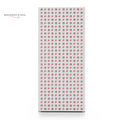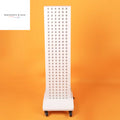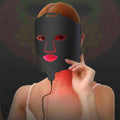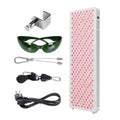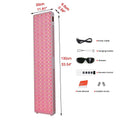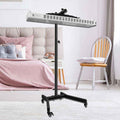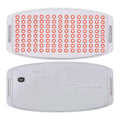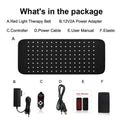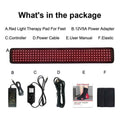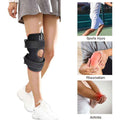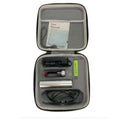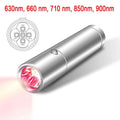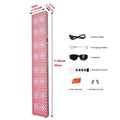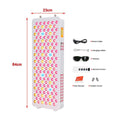Red Light Therapy Frequently Asked Questions – Guide
Frequently Asked Questions
Guide & Common Questions about
Red Light Therapy
Why Red Light Therapy ? Not a short video, but if you want to know more about how Red Light Therapy works and the benefits then this independent video will help you understand and save money too!
Dr. Michael Ruscio DC DNM on Red Lght Therapy
1. What exactly is Red Light Therapy (RLT)? RLT, or Photobiomodulation (PBM), uses specific wavelengths of red (around 630-700 nm) and near-infrared (around 800-900 nm) light to stimulate cellular function. These wavelengths penetrate the skin and are absorbed by chromophores in your cells, particularly in the mitochondria, leading to various therapeutic benefits.
2. How does RLT actually work? When red and near-infrared light hits your cells, it's absorbed by an enzyme called Cytochrome c Oxidase (CCO) in your mitochondria. This absorption helps increase ATP (cellular energy) production, modulate reactive oxygen species (ROS), enhance nitric oxide release, and activate various signalling pathways that promote healing, reduce inflammation, and improve cellular repair and regeneration.
3. Is Red Light Therapy safe? Yes, RLT is generally considered very safe when used correctly and according to manufacturer guidelines. Unlike UV light, it does not use harmful wavelengths that damage DNA or cause sunburn. The light is non-invasive and non-thermal (it doesn't typically heat the tissue to a damaging extent). However, proper eye protection is crucial, especially with higher-power devices.
4. Do I need to wear eye protection during RLT sessions?
For most general-purpose Red Light Therapy (RLT) panels and devices, yes, it is highly recommended and often crucial. While red light wavelengths (e.g., 630-700 nm) are generally considered safe for the eyes at therapeutic doses, the higher intensity, especially of near-infrared light (800-900 nm and beyond) emitted by powerful panels, can penetrate the eye. Prolonged or direct staring into these bright, intense light sources, particularly the NIR, could potentially cause discomfort, temporary visual disturbances (like blurriness), or even retinal damage over time due to oxidative stress or thermal effects. Always use the protective eyewear provided with your device or recommended by the manufacturer, and avoid staring directly into the light source during full-body or facial panel treatments.
However, it's important to note the nuance: There is a significant and growing body of research exploring the therapeutic benefits of Photobiomodulation (PBM) for specific ocular conditions like Age-Related Macular Degeneration (AMD) and dry eye syndrome. These applications typically involve very precise, low-intensity, and controlled doses of specific red and near-infrared wavelengths delivered by specialized medical devices, often under the supervision of an ophthalmologist or eye care professional. These targeted treatments are designed to be therapeutic for the eye, by stimulating mitochondrial function and reducing inflammation within the retina.
Therefore, unless you are using a device specifically designed and prescribed for a particular eye condition under professional guidance, the general safety advice for consumer-grade RLT devices is to protect your eyes from the broad, intense light output during your sessions.
5. How often should I use RLT, and for how long? This depends on your device's power output (irradiance) and your specific goals. Generally, sessions range from 5 to 20 minutes, used 3-5 times per week. For acute issues, more frequent short sessions might be beneficial initially. For chronic conditions or general wellness, consistency over time is key. Always follow your device manufacturer's specific recommendations.
6. When will I start seeing results? Results vary widely depending on the condition being treated, the consistency of use, and the device's efficacy.
Immediate: Some people report immediate pain relief or a sense of relaxation after just one session.
Days to Weeks: For skin health (e.g., reduced inflammation, improved glow), wound healing, or muscle soreness, noticeable changes might occur within a few days to 2-4 weeks.
Weeks to Months: For more significant changes like collagen production, wrinkle reduction, hair regrowth, or chronic pain management, consistent use for 1-3 months or longer is often required.
7. Can I use RLT every day? For most conditions and devices, daily or every-other-day use is common and generally safe. However, there's a concept called "biphasic dose response," meaning "more isn't always better." Excessive exposure might lead to diminishing returns or even negative effects. It's best to stick to recommended protocols and listen to your body.
8. Can RLT cause facial fat loss? No. Red light therapy does not cause facial fat loss. It is a non-thermal therapy that does not heat or damage fat cells. Concerns about facial fat loss are often mistakenly linked to high-heat treatments like radiofrequency or ultrasound, which operate on entirely different principles. RLT works to improve cellular health and collagen, which can enhance skin plumpness and appearance.
9. Can I use RLT with makeup or skincare products on my skin? It's generally recommended to use RLT on clean, bare skin to allow for optimal light penetration. Heavy makeup, sunscreens, or thick lotions can block the light. After your session, you can apply your usual skincare products, which may even absorb better due to improved microcirculation. Avoid products with photosensitizing ingredients immediately before RLT.
10. Is RLT the same as a tanning bed? Absolutely not. Tanning beds use primarily ultraviolet (UV) light, which damages skin cells, causes tanning, and increases the risk of skin cancer. RLT uses specific red and near-infrared wavelengths that are beneficial for cells and do not contain harmful UV rays. You will not get a tan from RLT.
11. Can I "overdo" Red Light Therapy? Yes, it is possible. While RLT is safe, there is an "optimal dose" for desired effects. Exceeding this dose (e.g., very long sessions, very high intensity without proper distance) might lead to diminishing returns or, in rare cases, minor irritation due to oxidative stress. Following manufacturer guidelines and the principles of irradiance and duration (Chapter 8) is crucial.
12. What's the difference between red light and near-infrared light? Both are part of the light therapy spectrum: * Red Light (630-700 nm): Is visible to the human eye and primarily targets superficial tissues, making it excellent for skin health, surface wounds, and conditions closer to the skin's surface. * Near-Infrared Light (800-900 nm and beyond): Is invisible to the human eye and penetrates deeper into tissues, making it more effective for muscle recovery, joint pain, bone health, and internal organ support. Many devices combine both for comprehensive benefits.
13. Can RLT help with mood or sleep? Yes. Red and near-infrared light can have a positive impact on mood, potentially by influencing cellular energy in the brain (especially with transcranial application) and reducing inflammation. Using red light in the evening can also help regulate circadian rhythm by signaling to the body that it's time to wind down, as it lacks the blue light wavelengths that can suppress melatonin.
14. Are there any side effects? Side effects are rare and usually mild. They can include temporary redness or warmth in the treated area. If you experience any persistent discomfort, irritation, or other adverse reactions, discontinue use and consult a healthcare professional.
15. Can I use RLT if I have a medical condition or am taking medication? It is essential to consult with your doctor or a qualified healthcare professional before starting RLT, especially if you have any pre-existing medical conditions (like cancer, epilepsy, severe heart conditions), are pregnant or breastfeeding, or are taking any medications (particularly photosensitizing drugs). They can advise on potential interactions or contraindications.
Shipping & Returns
What payment options do you have?
We do not process any payments, we leave that to the experts, PayPal is our and our customers prefferd method. It is 100% safe & secure direct or via the Shop portal. If you prefer to pay by other methods, we will help you. For example pro forma and direct payments
We also offer layby, you pay a deposit we hold your device for you until it is paid off and then deliver straight to you. Again, all payments held in the PayPal vault and you have access to your account that you can access at any time.
Do you ship internationally?
We primarily ship within the UK & EU. For international shipping inquiries, especially the USA, the lead times for delivery time are often extended beyond our control at times and customers in Australasia might not want to wait up to 3 or 4 weeks at times, not often, we do hit 2 weeks as standard but customs and clearance are out of our control. Please contact our customer service team.
What is your return policy?
We offer a satisfaction guarantee on our products with many devices carrying 5 year warranty on panels, some are 3 years, the warranty period is on each product page. Some only have 1 year, they are typically the smaller more frequently handled devices. Your positive experience is important to us and we are always happy to help, just let us know and we will support you.
How long does shipping take?
Standard UK & EU shipping typically takes 3-15 business days depending on device size, weight and location. Australasia & the Americas can sometimes take up to twice as long. We will keep you updated.
Help Us Improve Our FAQ
Your feedback helps us create better content. Please let us know which topics were most helpful and what else you'd like to see covered.
Still Have Questions?
If you can't find the answer you're looking for, please don't hesitate to contact us. Our team is here to help you on your wellness journey.




